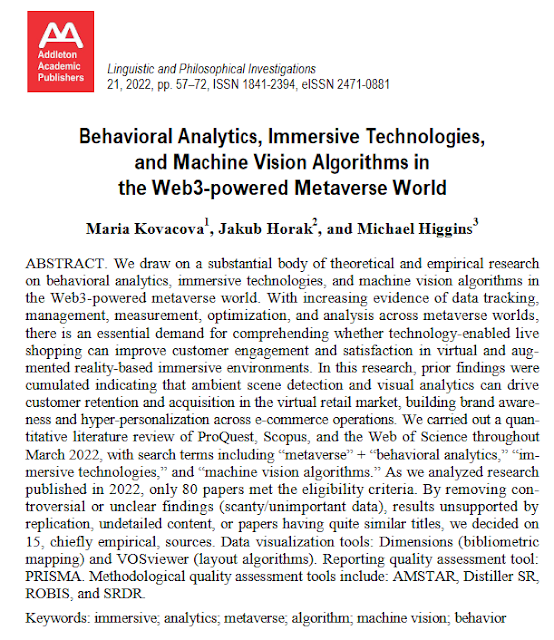Computational behavioral analytics models human behaviors in several contexts: intent, mental state, and opinion formation. Computational behavioral analysis is possible if there is data available that captures speech, language, movement, biometrics, gestures, facial expressions, etc. Combining those features allows us to build higher-order data structures that include broad contextual and multi-modal information. Duration of interaction is also a factor. Modeling sequences of behaviors or longer data streams might require sequential tagging to establish limits of relevance or allow for stream-based analytics. New linguistic approaches might include psycholinguistic data structures that convey emotional and affective content. In the context of the metaverse, behavioral coordination might be an effect that could introduce mitigation of unwanted behaviors. This effect is similar to the linguistic coordination phenomenon and related to cohesion and linguistic adaptation. Generally, behavioral analysis of actors in a virtual environment will be essential for responsible designers and ethical AI developers. Automated methods for real-time behavioral analytics might be necessary for many corporate applications.
https://www.proquest.com/openview/f2e5072a0ba8a228007b2b8d36b9c836/1?pq-origsite=gscholar&cbl=136108


No comments:
Post a Comment
Note: Only a member of this blog may post a comment.